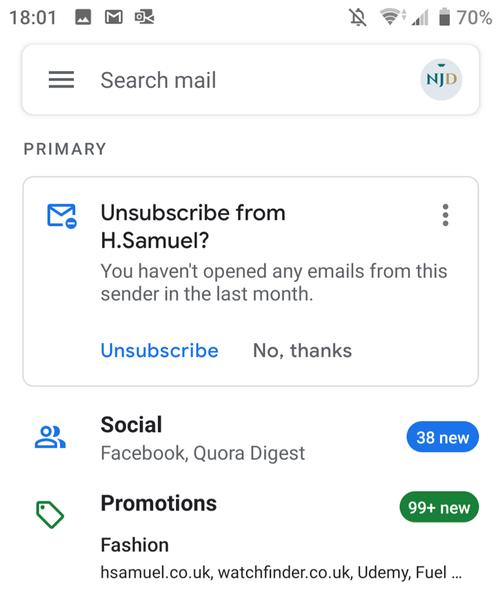Why are my emails going into spam?
Because you are using spam trigger words, silly.
No, it’s not - or at least it’s not as simple as that. What many people consider to be spam is not what the big players, like Google and Microsoft, now deem it to be.
The bar has been raised, and this is what you need to keep in mind when sending your marketing and sales emails.
Spam trigger words
Yes, I know I said it wasn’t spam trigger words that are the issue, and I don’t think they are as much these days, but they are still worth considering.

Case Study: PrimeStox
How we helped PrimeStox treble registrations while reducing spend in just two months.
Firstly, it’s not the use of spam trigger words, it is the overuse of spam trigger words that's the problem. For example, using the word ‘free’ in an email doesn’t mean your email is automatically destined for the spam folder. If what you are offering is genuinely free, then use it, however, putting it repeatedly in an email will increase the chances of it being flagged. If you want to emphasise ‘free’, consider adding it to an image.
Secondly, if you take care of the other things in this list, then spam trigger words will be something you don’t have to spend as much time eliminating. Email spam detection techniques have moved away from ‘content-based’ detection to ‘technical-based’.
DKIM, SPF and DMARC?
Speaking of technical issues, setting up the right email authentication - such as DKIM, SPF and DMARC - is a critical first step. What you are doing here is telling the receiving mail server that the emails you are sending are genuine.
Case Study: Peer to Peer Business Lender
How we developed a unique targeting approach and improved lead volumes from direct marketing by more than 80%.
Mail servers will check for records in your DNS settings to make sure that the sender domain, e.g. yourbusiness.com, has agreed for emails to be sent on your behalf - it’s like a digital signature.
Do you have permission?
Sending emails where you have permission is almost a guaranteed way of staying clear of spam traps. While purchasing lists is allowed under certain circumstances, you are putting your faith in the hands of the data provider who doesn’t necessarily have the best interests of your sender reputation at heart.
Purchased lists often contain ‘recycled spam traps’. These are email addresses that once existed but have since been taken over by spam trap operators who now use them to catch people not performing good list management.

Case Study: PrimeStox
How we helped PrimeStox treble registrations while reducing spend in just two months.
If you are looking to source data, consider options such as Data Discovery, where a verification check is undertaken to validate an email address before it is used.
Engagement
I wrote a piece a couple of years ago on engagement and I said it was killing businesses. I still stand by that. Engagement is the hottest thing right now when it comes to where your emails end up, and the last thing people consider: one, because it’s time-consuming to manage, and two, because it means deleting chunks of your database, and that frightens people. You should be more worried, however, if you are not managing the engagement of your emails by your recipients, because ISPs, such as Gmail, are… and they are punishing you if you get it wrong!
The reason that engagement is so important is because, get it wrong, you will still end up in the spam folder, or worse blacklisted, even if you do all of the other things on this list. Let’s take Gmail for example. Gmail monitors if your recipients are opening emails or not. Here’s the proof…

The problem for businesses is that the ISPs are not just monitoring individuals to check to see if they still want your emails, they are using it to determine whether your emails are relevant or not. If they determine they are not, they will move your emails away from users’ inboxes and eventually into their spam. Even if you have permission from a contact to email them, but they don’t engage with your emails or their email address becomes a recycled spam trap, they are hurting your sender reputation. Fortunately, the better marketing automation systems are starting to monitor engagement and will tell you if a contact has become unengaged.
If you need any help with the issues discussed in this post, please contact me on 01825 765617 and I’ll be happy to talk.
Case Study: Peer to Peer Business Lender
How we developed a unique targeting approach and improved lead volumes from direct marketing by more than 80%.
Related Reading

Blog: How to Stop Your Email Newsletters from Going to Spam
by Darren Coleshill, 5 minute read

Blog: Why Custom URLs Are Essential for Your Business
by Darren Coleshill, 3 minute read